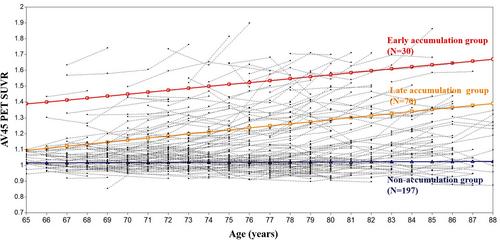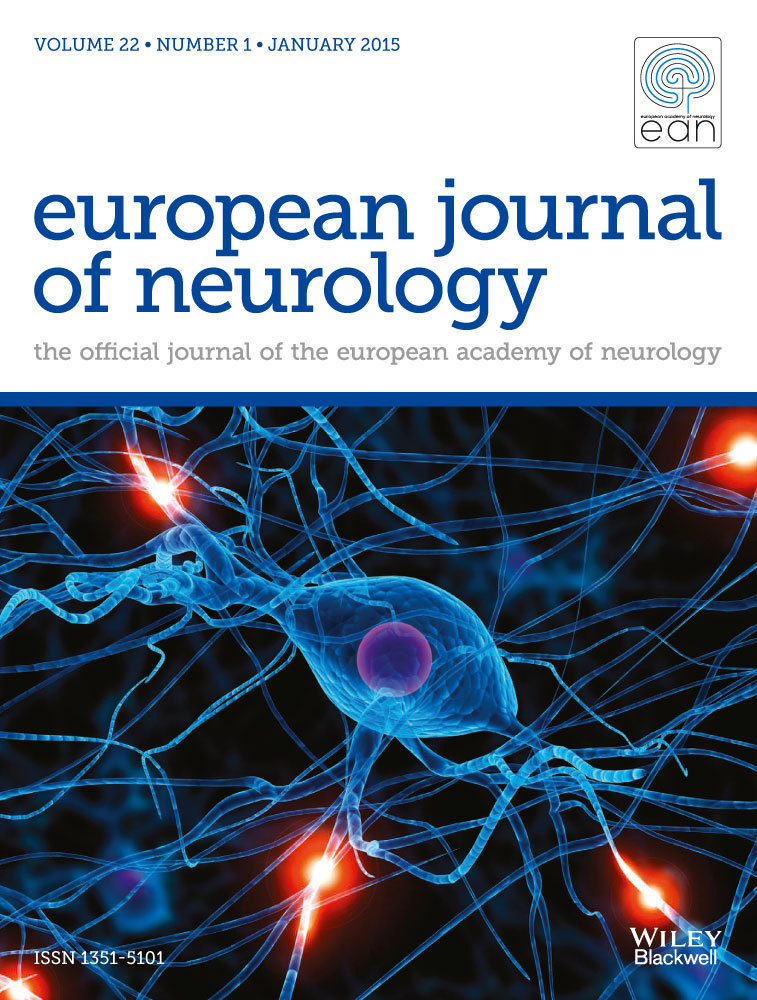Difference in trajectories according to early amyloid accumulation in cognitively unimpaired elderly
Abstract
Background and purpose
Amyloid β (Aβ), a major biomarker of Alzheimer's disease, leads to tau accumulation, neurodegeneration and cognitive decline. Modelling the trajectory of Aβ accumulation in cognitively unimpaired (CU) individuals is crucial, as treatments targeting Aβ are anticipated. The evolution of Aβ levels was investigated to determine whether it could lead to classification into different groups by studying longitudinal Aβ changes in older CU individuals, and differences between the groups were compared.
Methods
A total of 297 CU participants were included from the Alzheimer's Disease Neuroimaging Initiative database, and these participants underwent apolipoprotein E (APOE) genotyping, neuropsychological testing, brain magnetic resonance imaging, and an average of 3.03 follow-up 18F-florbetapir positron emission tomography scans. Distinct Aβ trajectory patterns were classified using latent class growth analysis, and longitudinal cognitive performances across these patterns were assessed with a linear mixed effects model.
Results
The optimal model consisted of three classes, with a high entropy value of 0.947. The classes were designated as follows: class 1, non-accumulation group (n = 197); class 2, late accumulation group (n = 70); and class 3, early accumulation group (n = 30). The late accumulation and early accumulation groups had more APOE ε4 carriers than the non-accumulation group. The longitudinal analysis of cognitive performance revealed that the early accumulation group showed the steepest decline (modified Preclinical Alzheimer's Cognitive Composite with digit symbol substitution [mPACCdigit], p < 0.001; modified Preclinical Alzheimer's Cognitive Composite with trails B [mPACCtrailsB], p < 0.001) and the late accumulation group showed a steeper decline (mPACCdigit, p = 0.014; mPACCtrailsB, p = 0.007) compared to the non-accumulation group.
Conclusions
Our study showed the heterogeneity of Aβ accumulation trajectories in CU older individuals. The prognoses for cognitive decline differ according to the Aβ trajectory patterns.


 求助内容:
求助内容: 应助结果提醒方式:
应助结果提醒方式:


